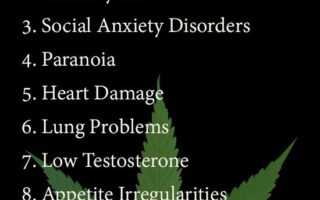Title: The Ongoing War on Cannabis: Unraveling Complexities in Policy and Perception
In the annals of social and political movements, few topics have sparked as much debate, division, and transformation as cannabis. What began as a fervent battle against a plant has evolved into a multifaceted war, characterized by shifting perceptions and evolving policies. This struggle has seen cultures clash, economies shift, and lives irrevocably altered—all in the name of a substance that many insist is nothing more than an herb. As we traverse the landscape of the ongoing war on cannabis, we delve into the historical roots, societal implications, and the battle lines drawn by legislation, allowing us to better comprehend the complex dynamics at play in this contentious arena. In a world where cannabis is increasingly embraced and vilified in equal measure, understanding the intricacies of this war is not just necessary but imperative for grasping its future trajectory.
Table of Contents
- The Complex History of Cannabis Prohibition and Its Societal Impact
- Understanding the Economic Consequences of Cannabis Criminalization
- Evaluating Alternative Approaches to Cannabis Regulation and Legalization
- Pathways Forward: Recommendations for Policy Reform and Community Health
- Q&A
- In Conclusion
The Complex History of Cannabis Prohibition and Its Societal Impact
The narrative surrounding cannabis in society is a tangled web of politics, prejudice, and shifting cultural norms. Initially embraced for its medicinal properties and industrial uses, cannabis began to attract negative attention in the early 20th century. This shift can be attributed to a variety of factors:
- Racial and Ethnic Bias: Cannabis was often associated with immigrant communities, leading to heightened stigma.
- Misinformation and Propaganda: Campaigns like “Reefer Madness” fueled fear and misunderstanding about the substance.
- Legal Frameworks: The Marihuana Tax Act of 1937 effectively criminalized its use, setting the stage for decades of prohibition.
This legislative push paved the way for escalating enforcement measures, with the ‘war on drugs’ emerging as a significant force in the 1980s, further entrenching beliefs about cannabis as a dangerous substance.
The societal repercussions of these prohibitive measures have been profound and far-reaching. Communities, particularly marginalized ones, have borne the brunt of aggressive policing and legal consequences. The data revealing this impact is stark:
| Metric | Impact |
|---|---|
| Arrest Rates | Over 600,000 arrests annually in the U.S. for cannabis possession. |
| Disproportionate Impact | Black individuals are 3-4 times more likely to be arrested than white individuals despite similar usage rates. |
| Economic Costs | An estimated $3.6 billion spent annually on enforcing cannabis prohibition. |
The persistence of these issues raises questions not just about the efficacy of prohibition but also its moral implications as society begins to reassess cannabis legality and its potential therapeutic benefits.
Understanding the Economic Consequences of Cannabis Criminalization
The longstanding criminalization of cannabis has paved the way for a myriad of economic challenges, not only for individuals but also for society at large. This policy has resulted in inflated law enforcement costs, including the funding of police forces, judicial systems, and incarceration facilities. Studies indicate that the annual expenditure on enforcing cannabis prohibition runs into billions of dollars. This financial burden ultimately diverts resources away from essential social services such as education and healthcare. Furthermore, the stigma surrounding cannabis consumers often leads to reduced job opportunities and economic mobility for those affected by drug-related convictions.
On the contrary, the legalization and regulation of cannabis present significant economic opportunities that countries and states have begun to capitalize on. Key benefits of this potential shift include:
- Tax Revenue: Legal sales can generate substantial tax income for governments.
- Job Creation: The cannabis industry has the potential to create thousands of new jobs across various sectors.
- Market Growth: Legalization can stimulate local economies through the establishment of dispensaries and ancillary businesses.
To better illustrate these points, consider the following table, which compares the costs of cannabis prohibition to potential revenues from legalization:
| Aspect | Prohibition Costs | Legalization Revenue |
|---|---|---|
| Annual Enforcement Cost | $10 billion | – |
| Estimated Tax Revenue | – | $3 billion |
| Job Creation Potential | – | 250,000+ jobs |
Evaluating Alternative Approaches to Cannabis Regulation and Legalization
As society grapples with the implications of decades-long prohibition, exploring various methods for regulating and legalizing cannabis has become crucial. Harm reduction, public safety, and economic opportunity are some of the key factors driving the discussion. Different jurisdictions have taken unique paths, and analyzing these varying approaches can illuminate best practices and potential pitfalls. For instance, countries like Canada have implemented a nationwide framework that balances regulation with personal choice, whereas several U.S. states have adopted a more fragmented approach, resulting in a patchwork of laws.
It’s essential to consider the outcomes of these alternative regulatory frameworks. A comparison of regulatory models reveals important insights:
| Model | Pros | Cons |
|---|---|---|
| Full Legalization | Increased tax revenue, reduced criminal activity | Potential for overconsumption, underage access |
| Decriminalization | Lessening legal repercussions, reduced strain on the justice system | No control over sales quality, potential underground markets |
| Medical Use Only | Access for patients, controlled distribution | Limited access for recreational users, ongoing stigma |
The need for continued evaluation is paramount as we learn from the successes and challenges of each approach. Stakeholders must engage in thoughtful discussions about overarching goals such as public health, community impact, and the economic landscape, in order to craft policies that are not only effective but also equitable. As we move forward, the synthesis of data from existing models will guide the development of informed cannabis legislation designed to serve society at large.
Pathways Forward: Recommendations for Policy Reform and Community Health
To truly address the lingering effects of the decades-long war on cannabis, a multi-faceted approach is crucial. This includes a re-evaluation of existing laws and the removal of punitive measures that have disproportionately impacted marginalized communities. Key recommendations for reform should focus on:
- Decriminalization: Ensure that cannabis possession is no longer a criminal offense, allowing individuals to reintegrate into society without the stigma of a criminal record.
- Expungement of Records: Create systems for the automatic expungement of previous cannabis-related convictions to rectify past injustices.
- Equitable Access to Licenses: Foster an inclusive market by prioritizing licenses for individuals from communities heavily affected by cannabis criminalization.
Furthermore, these reforms should be complemented by robust community health initiatives aimed at education and prevention. An effective strategy could involve:
| Initiative | Description |
|---|---|
| Public Education Campaigns | Inform the public about responsible cannabis use and its effects on health. |
| Investment in Treatment Programs | Allocate resources for addiction and mental health services to support those impacted by cannabis misuse. |
By addressing both policy reform and community health, we can pave the way for a more just and equitable future that recognizes the realities of cannabis in society today.
Q&A
Q&A: Understanding the “War on Cannabis”
Q1: What is the “War on Cannabis”?
A1: The “War on Cannabis” refers to the ongoing conflict surrounding the legal status, use, and perceptions of cannabis. It encompasses a range of policies, enforcement actions, societal attitudes, and cultural narratives that have historically aimed to criminalize cannabis use while highlighting the debate over its legalization for medical and recreational purposes.
Q2: When did this conflict begin?
A2: The roots of the ”War on Cannabis” can be traced back to the early 20th century, gaining momentum in the 1930s with campaigns that demonized cannabis, culminating in the Marihuana Tax Act of 1937. The narrative intensified through the latter half of the century, particularly during the 1970s and 1980s, with international treaties, national policies, and local laws all targeting cannabis users and cultivation.
Q3: What impacts has the “War on Cannabis” had on society?
A3: The ”War on Cannabis” has had far-reaching societal impacts, including racial disparities in law enforcement, social stigma against users, and the establishment of a vast underground market. Communities of color have often been disproportionately affected by cannabis-related arrests and convictions, creating deep-seated inequities that continue to garner social justice movements’ attention.
Q4: Has public perception of cannabis changed over time?
A4: Yes, public perception has undergone a significant transformation. Once heavily stigmatized, attitudes toward cannabis have softened in recent decades, with many now viewing it as a harmless plant, particularly after its successful rebranding as a potential therapeutic aid. Polls indicate increasing support for legalization and decriminalization, signaling a notable shift in societal views.
Q5: What are the current policies surrounding cannabis?
A5: Today, cannabis policies vary widely across the globe. Some countries and U.S. states have fully legalized cannabis for recreational use, while others permit it solely for medicinal purposes. Meanwhile, numerous regions maintain strict prohibition laws. This patchwork of regulations creates a complex legal landscape, influencing commerce, healthcare, and criminal justice systems.
Q6: How do advocates and opponents of cannabis legalization differ?
A6: Advocates argue for the potential benefits of legalization, highlighting economic opportunities like taxation and job creation, as well as the therapeutic properties of cannabis for various medical conditions. In contrast, opponents often raise concerns about public health risks and potential increases in usage, particularly among youth, emphasizing a need for cautious regulation and continued enforcement against illegal use.
Q7: Looking ahead, what might the future hold for cannabis legislation?
A7: The future of cannabis legislation appears to be on a trajectory of increased legalization and acceptance. As more data emerges about its effects and benefits, it is likely that more regions will reconsider their stance on cannabis use. However, the pace and nature of these changes will depend on various factors, including political will, public sentiment, and ongoing research into the plant’s impact on society.
Q8: What role do you see for ongoing discussions about cannabis in addressing social equity?
A8: Ongoing discussions about cannabis provide a critical opportunity to address historical injustices and inequities related to its prohibition. By focusing on social equity in future cannabis legislation—such as expunging past convictions and ensuring equitable access to the legal cannabis market for marginalized communities—there lies potential for healing and advancing social justice goals in society.
the “War on Cannabis” is a multifaceted issue that raises questions about legality, morality, equity, and the evolving understanding of this ancient plant. As debates continue, the future of cannabis remains a dynamic conversation in both cultural and legislative arenas.
In Conclusion
As we reflect on the complex landscape of the “war on cannabis,” it becomes clear that this battle has unfolded over decades, marked by shifting policies, cultural attitudes, and social justice implications. With each passing year, the conversation grows more nuanced; what was once a contentious issue is now at the forefront of reform movements across the globe.
The tides are turning, with an increasing number of jurisdictions recognizing the potential benefits of cannabis—medicinally, economically, and socially. As we venture into this new era of understanding, it is vital to consider the lessons learned from the past and to approach future policies with a balanced perspective, ensuring that the focus shifts from prohibition to integration.
the dialogue surrounding cannabis is not merely about legality or morality; it’s about recognizing the shared humanity of those affected by misguided policies and embracing a future where informed choices pave the way for healing and progress. The war may be drawing to a close, but the journey towards a more just world continues, inviting us all to play a role in shaping what lies ahead.



